I have been interested in solar power for decades. As I teenager I had a little solar cell the size of a postage stamp, with two wires poking out of it. I didn’t really know what to do with it, but it looked cool.
About a decade ago I started looking more seriously into solar power, when the various laws and tax incentives started to improve. But our house at the time was thoroughly shaded, so it was out of the question.
 Three years ago we moved to a new house, and it has great southern exposure, thanks to the location on a southeast corner lot. There are three roof segments facing south, with the biggest “upper” segment getting blasted by sunlight all day long — almost no shade whatsoever. The second biggest roof segment had a gigantic oak tree shading it. The third and smallest roof segment had few shading concerns, but the panels would have been visible from the front of the house. I really wanted to keep the front of the house “clean”, and I wasn’t going to be able to fit more than 3 or 4 panels on that little segment. So I was debating whether to use that front roof, but the upper segment would definitely host the lion’s share of the solar system.
Three years ago we moved to a new house, and it has great southern exposure, thanks to the location on a southeast corner lot. There are three roof segments facing south, with the biggest “upper” segment getting blasted by sunlight all day long — almost no shade whatsoever. The second biggest roof segment had a gigantic oak tree shading it. The third and smallest roof segment had few shading concerns, but the panels would have been visible from the front of the house. I really wanted to keep the front of the house “clean”, and I wasn’t going to be able to fit more than 3 or 4 panels on that little segment. So I was debating whether to use that front roof, but the upper segment would definitely host the lion’s share of the solar system.
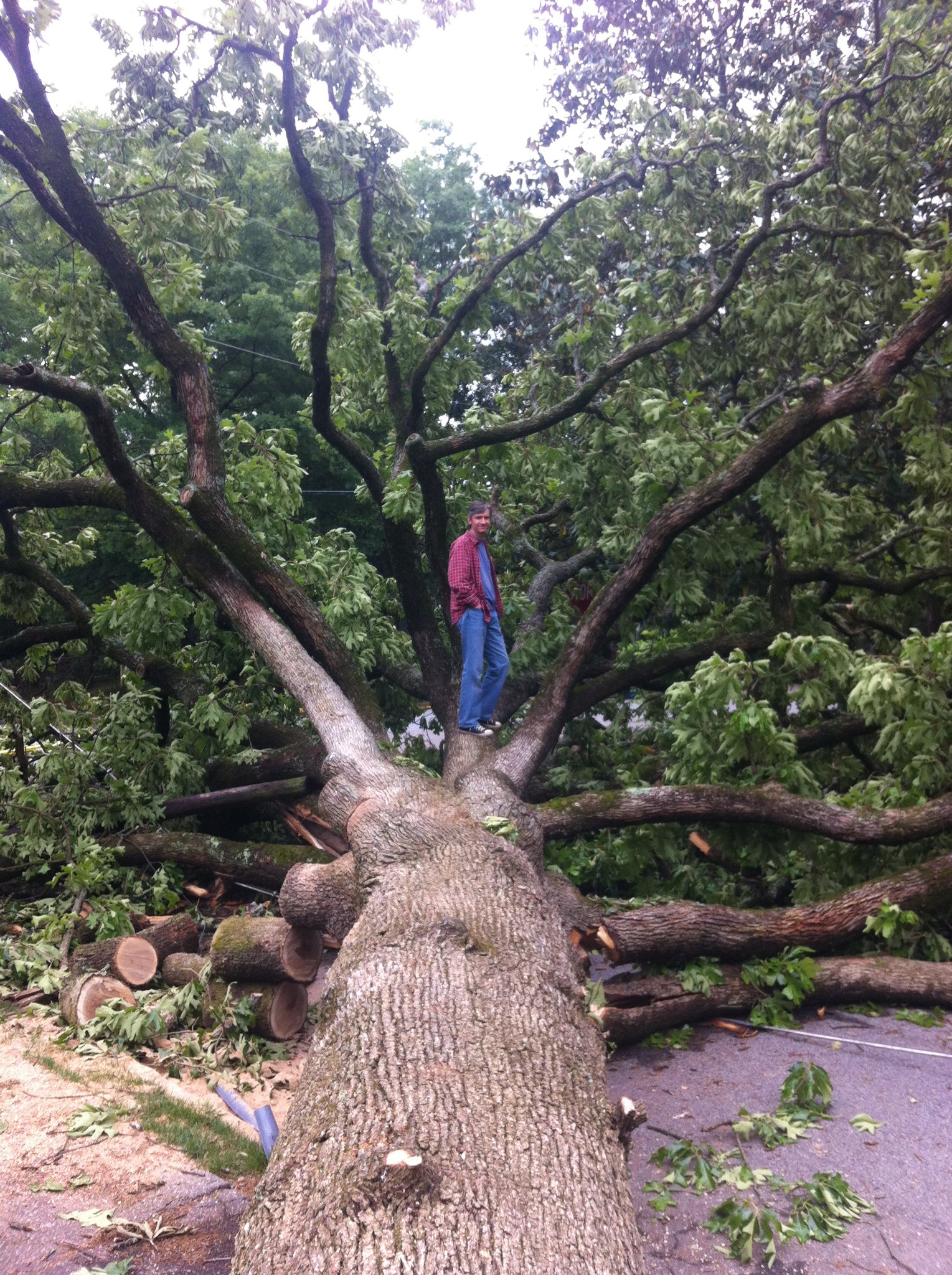 Then last spring the gigantic oak fell. Ouch. It took us a full three months to deal with that, but afterwards we now had a newly sunlit roof segment. That pretty much settled it — I wouldn’t have to bother with the little front roof segment, and so came up with a solar panel layout that fit 17 panels on the roof. And it would be pretty much maxed out with those 17 panels — any more panels would have to be located in places that got either morning or afternoon shade.
Then last spring the gigantic oak fell. Ouch. It took us a full three months to deal with that, but afterwards we now had a newly sunlit roof segment. That pretty much settled it — I wouldn’t have to bother with the little front roof segment, and so came up with a solar panel layout that fit 17 panels on the roof. And it would be pretty much maxed out with those 17 panels — any more panels would have to be located in places that got either morning or afternoon shade.
I could have gotten a smaller system, but I figured I’d do this once, and do it right.
Before installing solar, however, I needed to get the roof itself replaced. It was already over 20 years old and actually leaking in a few places. We finally got that roof job done in October, including some repairs that were needed when they got a look under the old shingling. After the holidays, we had some skylights put in to help bring some brightness to the second floor of the house, which was otherwise quite dark in places. All of the new sunlights were installed on the north facing roofs, in order to reserve all of the south-facing surfaces for the solar power system.
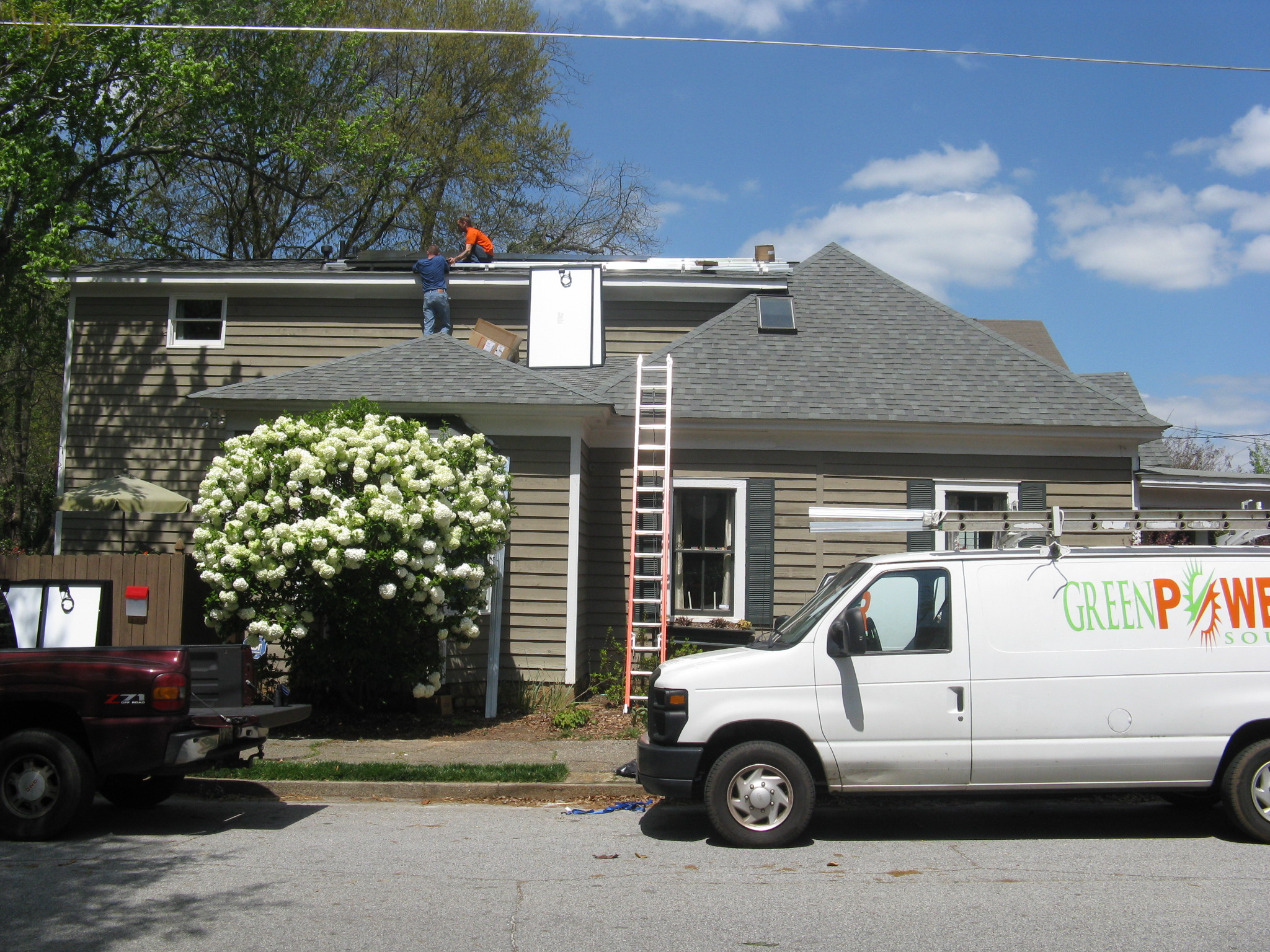 Finally, in February I was able to finish analyzing the competing bids from contractors and sign on the dotted line for the solar system install. Then it just became a waiting game, waiting for the panels and other parts to arrive from the manufacturers, and waiting for the weather and the installers’ schedule to line up.
Finally, in February I was able to finish analyzing the competing bids from contractors and sign on the dotted line for the solar system install. Then it just became a waiting game, waiting for the panels and other parts to arrive from the manufacturers, and waiting for the weather and the installers’ schedule to line up.
 On April 8th, the install finally started. The installers first tackled the “upper” array — I was having them put 11 panels on the roof of the house addition. This roof is high up and at a shallow angle, so actually not really visible from the ground, unless you stand way back (e.g. on the neighbor’s property). It ended up taking them most of the day to do that array.
On April 8th, the install finally started. The installers first tackled the “upper” array — I was having them put 11 panels on the roof of the house addition. This roof is high up and at a shallow angle, so actually not really visible from the ground, unless you stand way back (e.g. on the neighbor’s property). It ended up taking them most of the day to do that array.
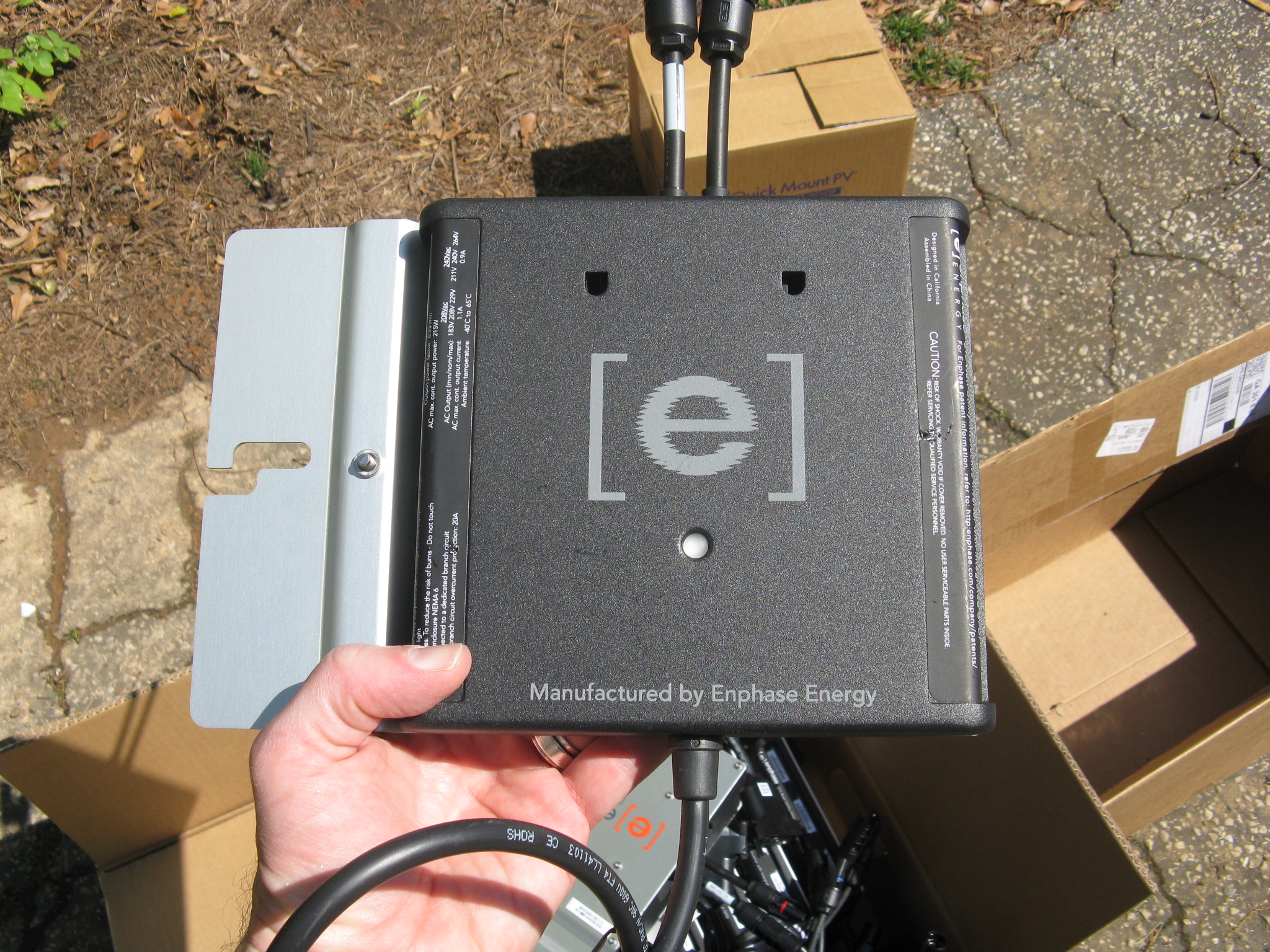 Each solar panel is about the size of a large coffee table (smaller than a sheet of plywood), and has a small “microinverter” mounted to the back to integrate the DC power coming out of the solar panel into the AC power system of the house.
Each solar panel is about the size of a large coffee table (smaller than a sheet of plywood), and has a small “microinverter” mounted to the back to integrate the DC power coming out of the solar panel into the AC power system of the house.
Late in the afternoon they got started on the “side” array, which would have 6 panels arranged in a 3-2-1 pyramid pattern, and clearly visible from the street. For this array I was very sensitive to the exact positioning, because these panels would be very visible from the street, and I wanted to make sure they lined up perfectly.
 The next day they resumed the construction of the side array. After that got completed, they worked on getting the wiring from the arrays over to the far side of the house.
The next day they resumed the construction of the side array. After that got completed, they worked on getting the wiring from the arrays over to the far side of the house.  For safety purposes, the wiring from solar power systems has to first go to a safety disconnect device mounted on the outside of the house, next to the power meter. From there the wiring then feeds into the breaker panel, typically inside the house. The power connects into the breaker panel just like any other circuit (e.g. to your clothes dryer), except the power is flowing backwards, into the breaker panel.
For safety purposes, the wiring from solar power systems has to first go to a safety disconnect device mounted on the outside of the house, next to the power meter. From there the wiring then feeds into the breaker panel, typically inside the house. The power connects into the breaker panel just like any other circuit (e.g. to your clothes dryer), except the power is flowing backwards, into the breaker panel.
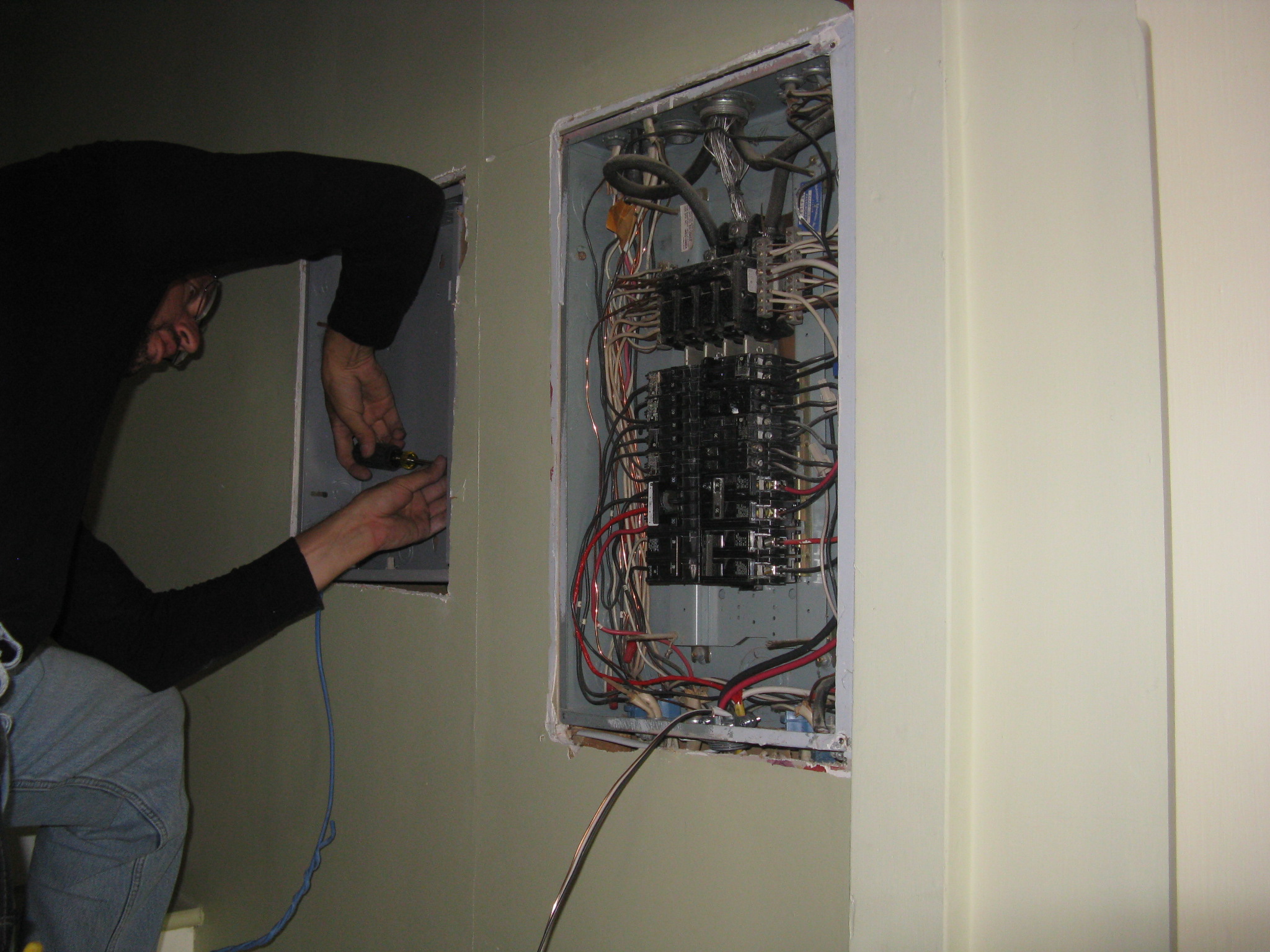 Finally, they installed the indoor controller electronics. This is just a little wall-mounted device, like a big thermostat, that provides status on the solar system. The indoor controller is not necessary for the system to function, rather it’s just a device that keeps track of the equipment, and provides a very cool web page for purposes of seeing more. However I didn’t want them to mount it on the wall, rather in the wall, inside a new box, because that stairwell was already cramped and I didn’t want this new thing crowding it further.
Finally, they installed the indoor controller electronics. This is just a little wall-mounted device, like a big thermostat, that provides status on the solar system. The indoor controller is not necessary for the system to function, rather it’s just a device that keeps track of the equipment, and provides a very cool web page for purposes of seeing more. However I didn’t want them to mount it on the wall, rather in the wall, inside a new box, because that stairwell was already cramped and I didn’t want this new thing crowding it further.
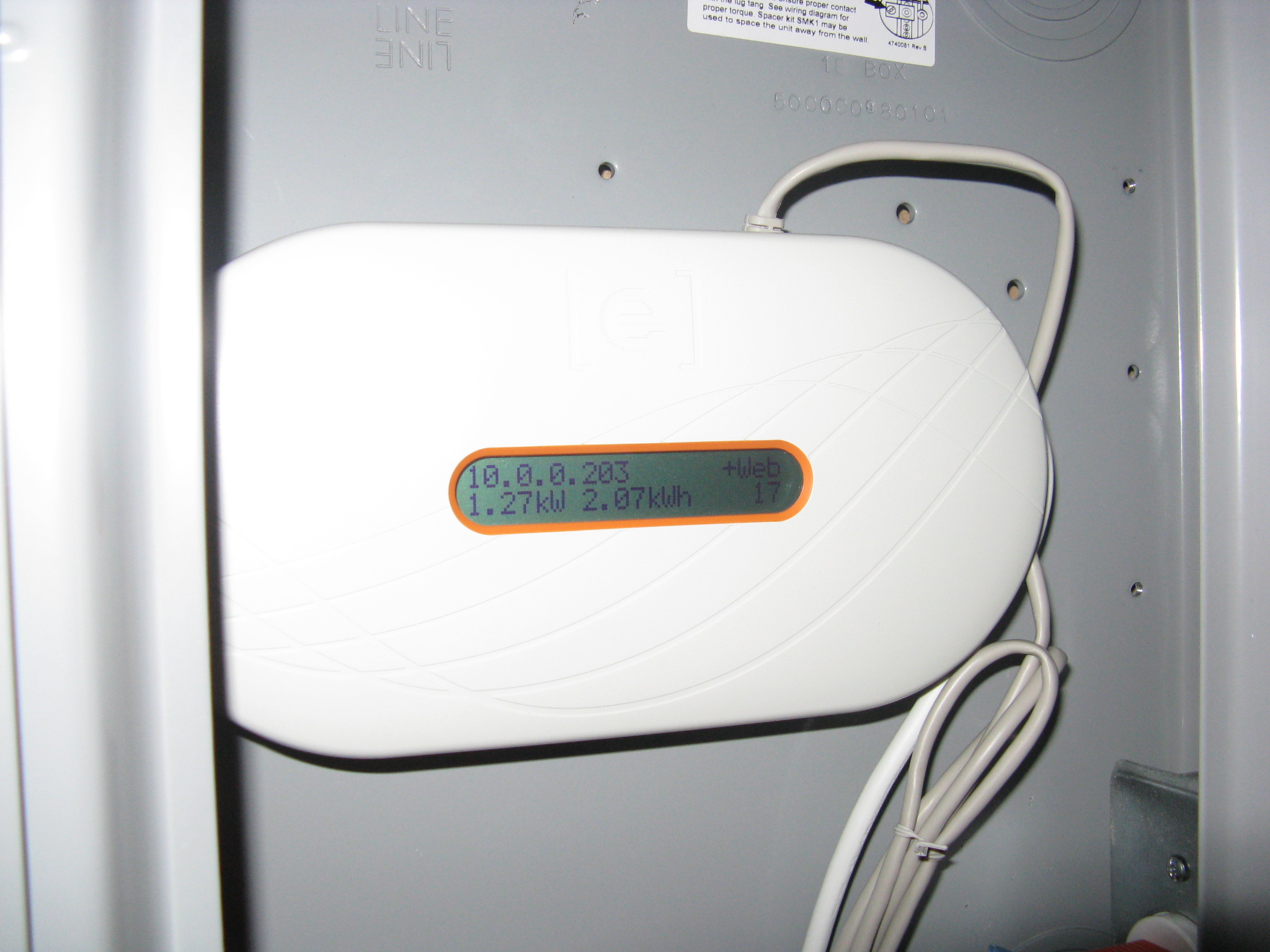 And with that, at around 5:00pm that Wednesday afternoon, we flipped the switches on the system! One by one, the 17 panels came to life and started generating power. Within 15 minutes the system was generating about 1200 Watts, limited only by the fact that the sun was already setting.
And with that, at around 5:00pm that Wednesday afternoon, we flipped the switches on the system! One by one, the 17 panels came to life and started generating power. Within 15 minutes the system was generating about 1200 Watts, limited only by the fact that the sun was already setting.
Over the next few days it would hit a peak of 3600 Watts (3.6 kilowatts, or kW), which is exactly what was expected for this system. Officially the system is rated at 4500 watts, but that is basically an ideal number, and various real-world inefficiencies kick in to result in a more realistic peak power of 3.6 kW.
I have been wanting to do this for … forever. About a decade ago my mother took interest, and we had talked about putting a system on her house (in New Jersey) after I got mine done. New Jersey had very generous incentives in place until 2009, when they dialed the incentives back somewhat. Sadly, she passed away in 2006 so we never got a chance to take on the project, but I’m still happy to have completed our own system, at last.
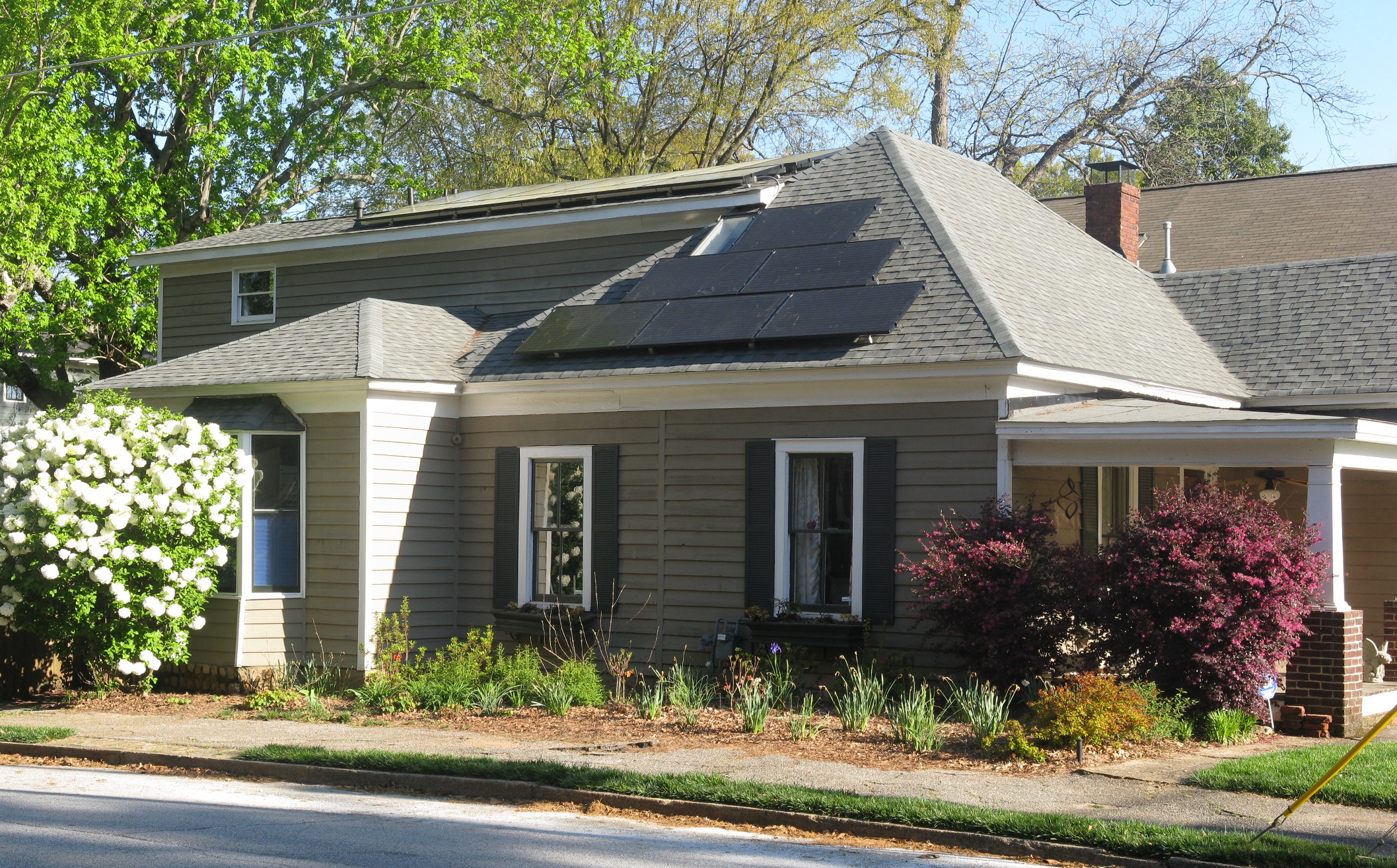 I like to say that as an electrical engineer, I live three years in the future. Engineers tend to be working very hard on things that are about to become mainstream. In 2010, I got serious about electric cars and bought one of the first production cars in the country, becoming a local advocate for that technology. Since then, hundreds of thousands of EVs have sold and the cars have become as mainstream as hybrids were a decade ago. So now I am moving on to the next thing, which is solar power. The financials aren’t a slam dunk, yet. But I believe that within three years they will be.
I like to say that as an electrical engineer, I live three years in the future. Engineers tend to be working very hard on things that are about to become mainstream. In 2010, I got serious about electric cars and bought one of the first production cars in the country, becoming a local advocate for that technology. Since then, hundreds of thousands of EVs have sold and the cars have become as mainstream as hybrids were a decade ago. So now I am moving on to the next thing, which is solar power. The financials aren’t a slam dunk, yet. But I believe that within three years they will be.
For more information on solar, see the two-page fact sheet on my website here:
http://electrifyatlanta.com/wp/?page_id=192
Or stop by the house and grab a copy, and take a look!
 Three years ago we moved to a new house, and it has great southern exposure, thanks to the location on a southeast corner lot. There are three roof segments facing south, with the biggest “upper” segment getting blasted by sunlight all day long — almost no shade whatsoever. The second biggest roof segment had a gigantic oak tree shading it. The third and smallest roof segment had few shading concerns, but the panels would have been visible from the front of the house. I really wanted to keep the front of the house “clean”, and I wasn’t going to be able to fit more than 3 or 4 panels on that little segment. So I was debating whether to use that front roof, but the upper segment would definitely host the lion’s share of the solar system.
Three years ago we moved to a new house, and it has great southern exposure, thanks to the location on a southeast corner lot. There are three roof segments facing south, with the biggest “upper” segment getting blasted by sunlight all day long — almost no shade whatsoever. The second biggest roof segment had a gigantic oak tree shading it. The third and smallest roof segment had few shading concerns, but the panels would have been visible from the front of the house. I really wanted to keep the front of the house “clean”, and I wasn’t going to be able to fit more than 3 or 4 panels on that little segment. So I was debating whether to use that front roof, but the upper segment would definitely host the lion’s share of the solar system. Then last spring the gigantic oak fell. Ouch. It took us a full three months to deal with that, but afterwards we now had a newly sunlit roof segment. That pretty much settled it — I wouldn’t have to bother with the little front roof segment, and so came up with a solar panel layout that fit 17 panels on the roof. And it would be pretty much maxed out with those 17 panels — any more panels would have to be located in places that got either morning or afternoon shade.
Then last spring the gigantic oak fell. Ouch. It took us a full three months to deal with that, but afterwards we now had a newly sunlit roof segment. That pretty much settled it — I wouldn’t have to bother with the little front roof segment, and so came up with a solar panel layout that fit 17 panels on the roof. And it would be pretty much maxed out with those 17 panels — any more panels would have to be located in places that got either morning or afternoon shade. Finally, in February I was able to finish analyzing the competing bids from contractors and sign on the dotted line for the solar system install. Then it just became a waiting game, waiting for the panels and other parts to arrive from the manufacturers, and waiting for the weather and the installers’ schedule to line up.
Finally, in February I was able to finish analyzing the competing bids from contractors and sign on the dotted line for the solar system install. Then it just became a waiting game, waiting for the panels and other parts to arrive from the manufacturers, and waiting for the weather and the installers’ schedule to line up. On April 8th, the install finally started. The installers first tackled the “upper” array — I was having them put 11 panels on the roof of the house addition. This roof is high up and at a shallow angle, so actually not really visible from the ground, unless you stand way back (e.g. on the neighbor’s property). It ended up taking them most of the day to do that array.
On April 8th, the install finally started. The installers first tackled the “upper” array — I was having them put 11 panels on the roof of the house addition. This roof is high up and at a shallow angle, so actually not really visible from the ground, unless you stand way back (e.g. on the neighbor’s property). It ended up taking them most of the day to do that array. Each solar panel is about the size of a large coffee table (smaller than a sheet of plywood), and has a small “microinverter” mounted to the back to integrate the DC power coming out of the solar panel into the AC power system of the house.
Each solar panel is about the size of a large coffee table (smaller than a sheet of plywood), and has a small “microinverter” mounted to the back to integrate the DC power coming out of the solar panel into the AC power system of the house. The next day they resumed the construction of the side array. After that got completed, they worked on getting the wiring from the arrays over to the far side of the house.
The next day they resumed the construction of the side array. After that got completed, they worked on getting the wiring from the arrays over to the far side of the house.  For safety purposes, the wiring from solar power systems has to first go to a safety disconnect device mounted on the outside of the house, next to the power meter. From there the wiring then feeds into the breaker panel, typically inside the house. The power connects into the breaker panel just like any other circuit (e.g. to your clothes dryer), except the power is flowing backwards,
For safety purposes, the wiring from solar power systems has to first go to a safety disconnect device mounted on the outside of the house, next to the power meter. From there the wiring then feeds into the breaker panel, typically inside the house. The power connects into the breaker panel just like any other circuit (e.g. to your clothes dryer), except the power is flowing backwards,  Finally, they installed the indoor controller electronics. This is just a little wall-mounted device, like a big thermostat, that provides status on the solar system. The indoor controller is not necessary for the system to function, rather it’s just a device that keeps track of the equipment, and provides a very cool web page for purposes of seeing more. However I didn’t want them to mount it on the wall, rather in the wall, inside a new box, because that stairwell was already cramped and I didn’t want this new thing crowding it further.
Finally, they installed the indoor controller electronics. This is just a little wall-mounted device, like a big thermostat, that provides status on the solar system. The indoor controller is not necessary for the system to function, rather it’s just a device that keeps track of the equipment, and provides a very cool web page for purposes of seeing more. However I didn’t want them to mount it on the wall, rather in the wall, inside a new box, because that stairwell was already cramped and I didn’t want this new thing crowding it further. And with that, at around 5:00pm that Wednesday afternoon, we flipped the switches on the system! One by one, the 17 panels came to life and started generating power. Within 15 minutes the system was generating about 1200 Watts, limited only by the fact that the sun was already setting.
And with that, at around 5:00pm that Wednesday afternoon, we flipped the switches on the system! One by one, the 17 panels came to life and started generating power. Within 15 minutes the system was generating about 1200 Watts, limited only by the fact that the sun was already setting. I like to say that as an electrical engineer, I live three years in the future. Engineers tend to be working very hard on things that are about to become mainstream. In 2010, I got serious about electric cars and bought one of the first production cars in the country, becoming a local advocate for that technology. Since then, hundreds of thousands of EVs have sold and the cars have become as mainstream as hybrids were a decade ago. So now I am moving on to the next thing, which is solar power. The financials aren’t a slam dunk, yet. But I believe that within three years they will be.
I like to say that as an electrical engineer, I live three years in the future. Engineers tend to be working very hard on things that are about to become mainstream. In 2010, I got serious about electric cars and bought one of the first production cars in the country, becoming a local advocate for that technology. Since then, hundreds of thousands of EVs have sold and the cars have become as mainstream as hybrids were a decade ago. So now I am moving on to the next thing, which is solar power. The financials aren’t a slam dunk, yet. But I believe that within three years they will be.